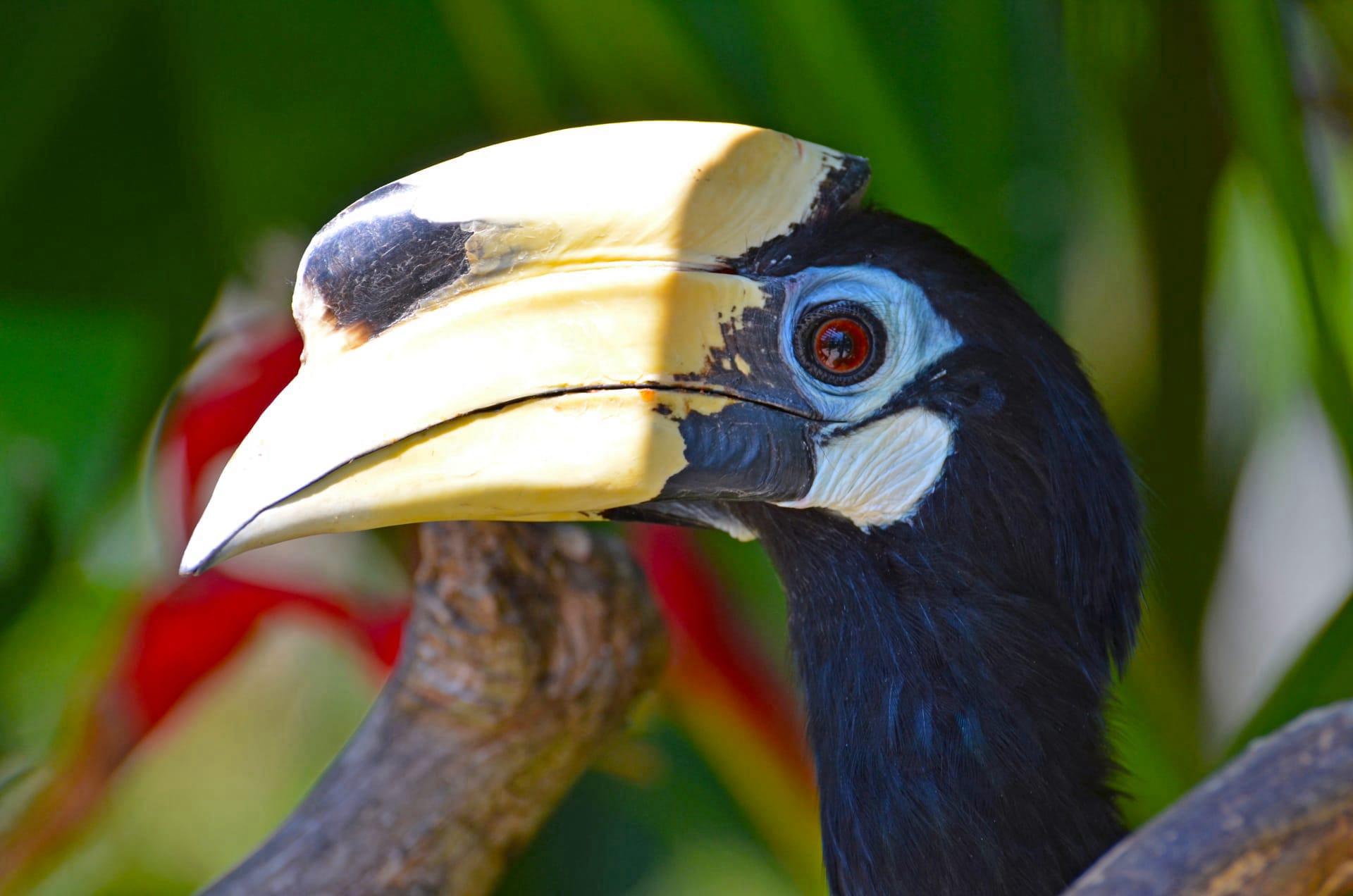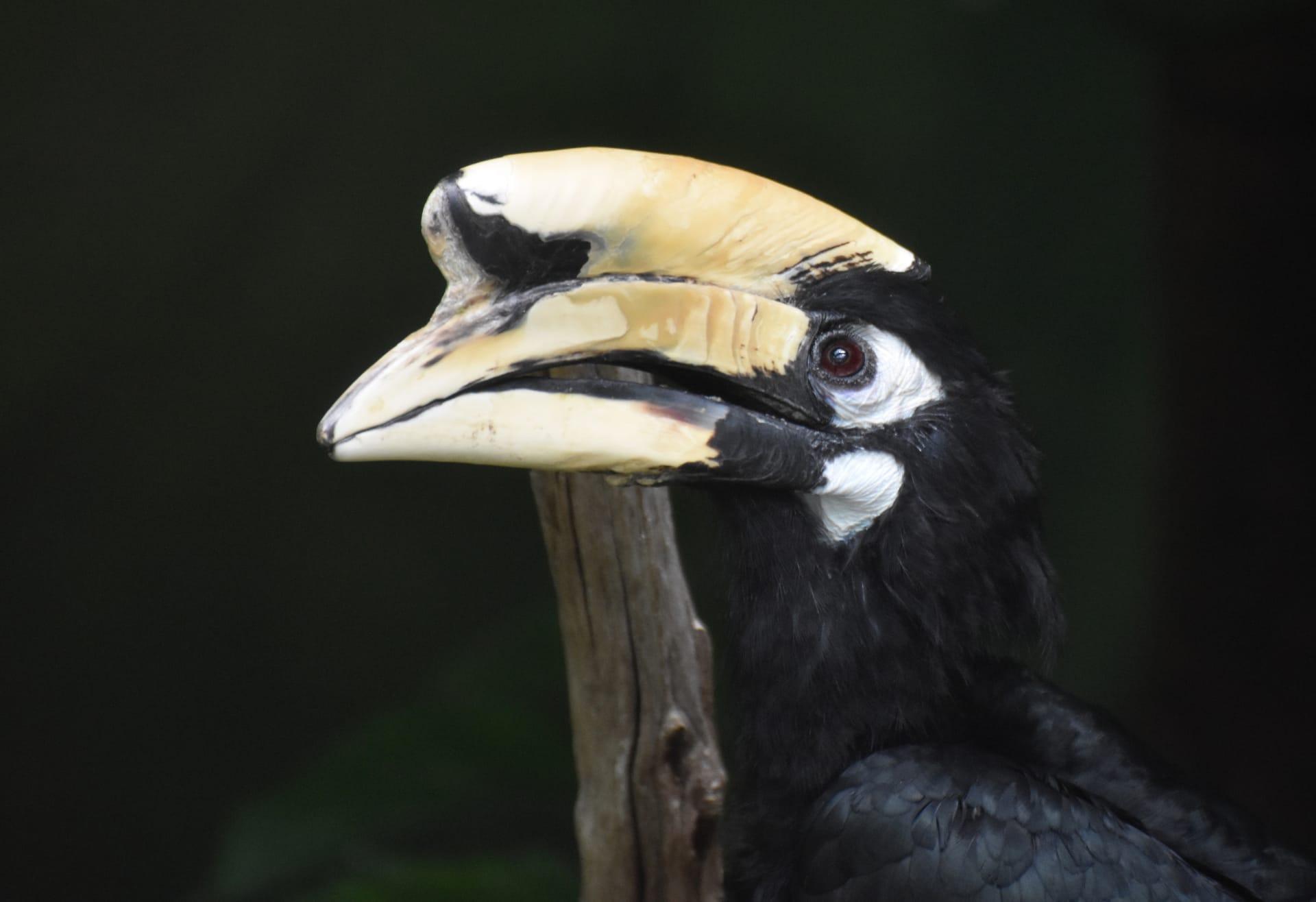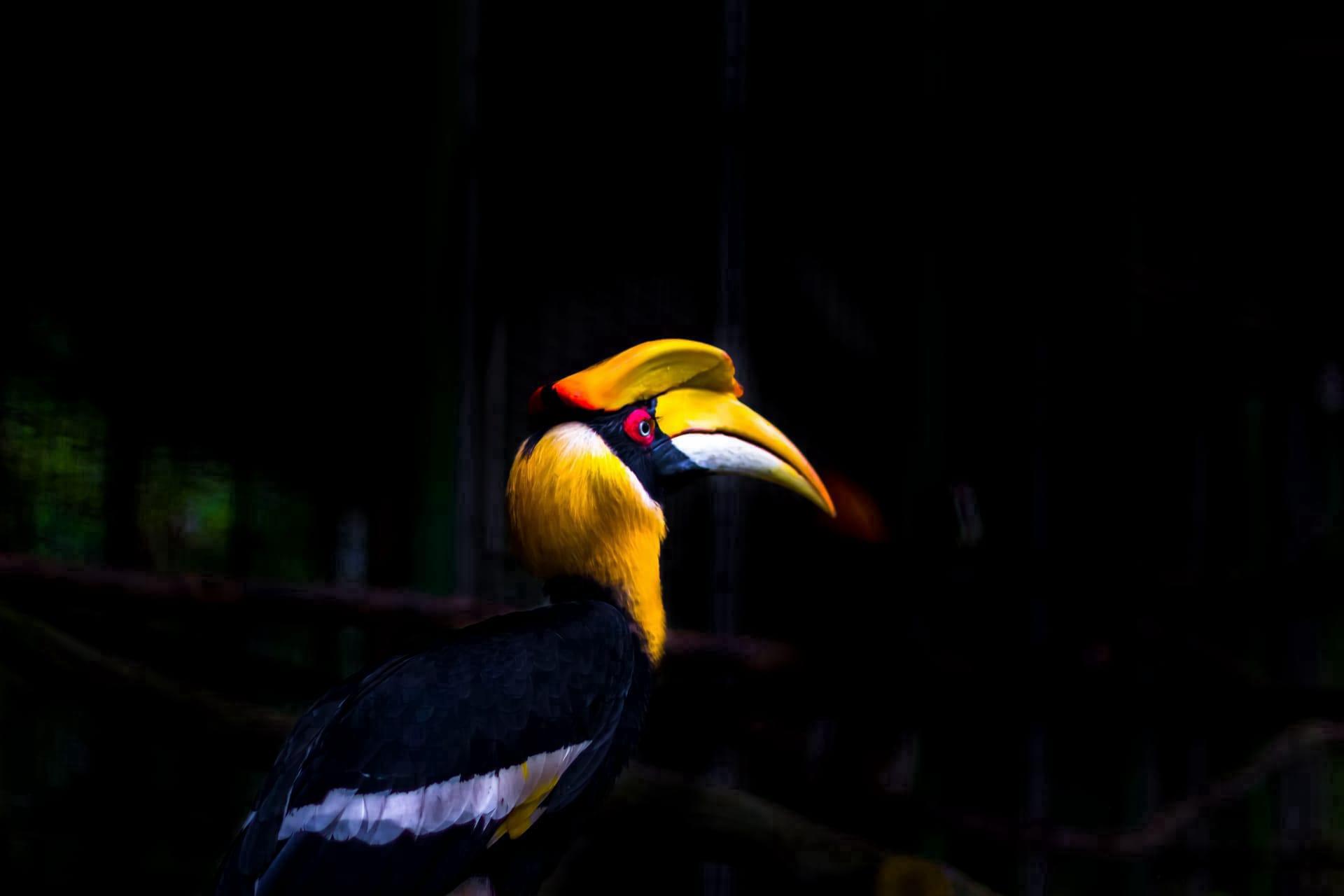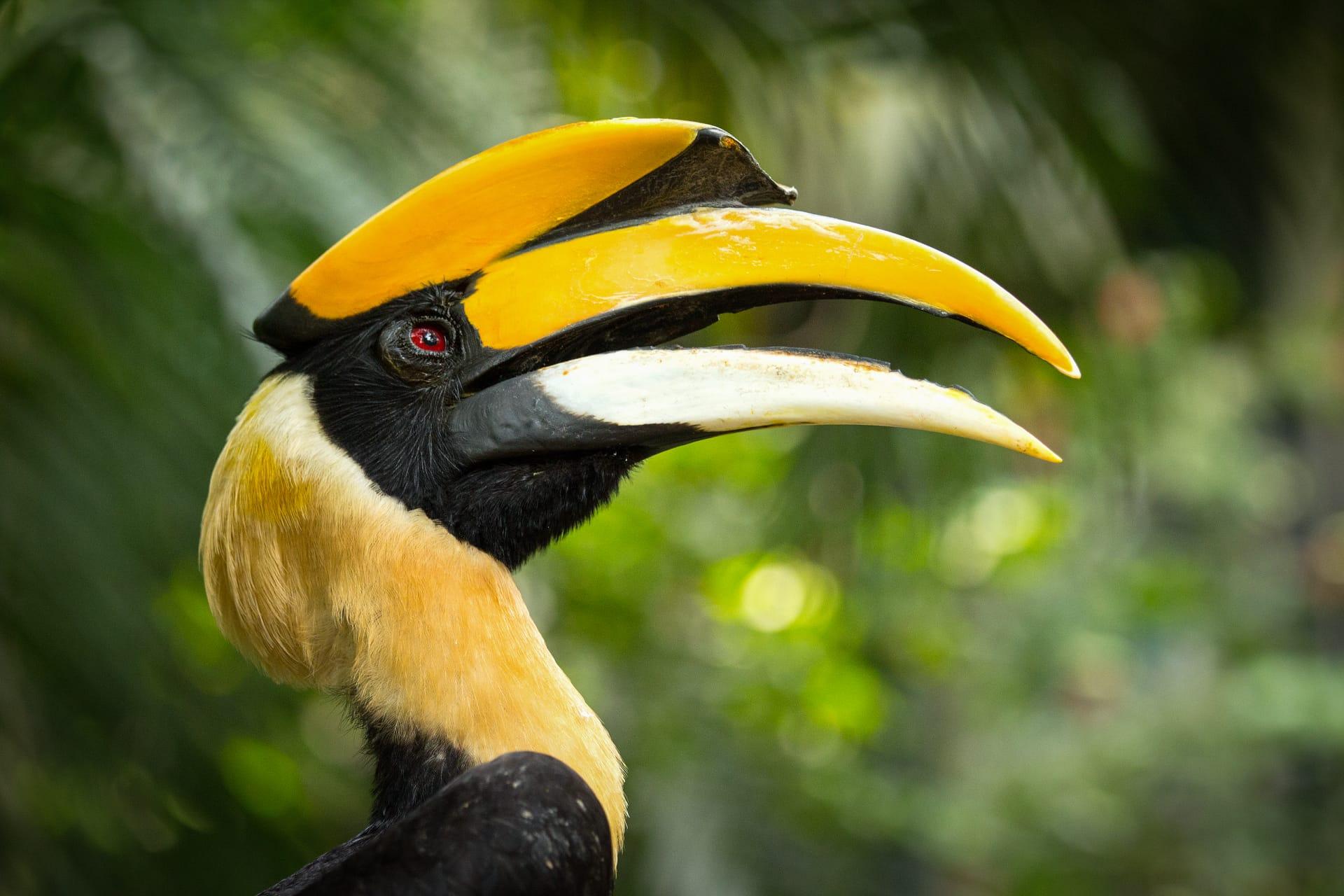Hornbill
- Home /
- Mini Encyclopedia /
- Animal /
- Hornbill
1
Hornbills, belonging to the family Bucerotidae, are a unique group of birds known for their distinctively large bills, topped with a protruding casque. There are about 60 species of hornbills, broadly classified into two main groups: the African hornbills and the Asian hornbills. African species, like the Southern Ground Hornbill, are generally larger and lack a prominent casque. In contrast, Asian species, such as the Great Hornbill, often feature vivid colors and prominent casques. Hornbills vary significantly in size, with the smallest being the Black Dwarf Hornbill measuring around 16 inches in length, and the largest being the Southern Ground Hornbill, reaching up to 4 feet.
Hornbills are distributed across a wide geographical range. In Africa, they are found in the savannahs, forests, and grasslands, covering a vast area from the Sahara Desert's southern edge to the Cape of Good Hope. Asian hornbills predominantly inhabit the tropical rainforests of India, the Philippines, Indonesia, and Malaysia. These birds are highly adapted to their environments, with species like the Rhinoceros Hornbill being synonymous with Bornean rainforests. Urbanization and deforestation have impacted their distribution, making some species, like the Helmeted Hornbill, critically endangered due to habitat loss and poaching.

2
Question: Do hornbills seal their mates in trees during nesting?
Answer: Yes, but there's more to this intriguing behavior. During the breeding season, female hornbills seal themselves inside tree cavities or crevices using mud, droppings, and fruit pulp, leaving only a narrow slit open. This behavior, exhibited by most hornbill species, is a survival strategy. The male hornbill diligently feeds the female and the chicks through this slit. This self-imposed confinement, which can last up to 3 months, protects the eggs and chicks from predators. Once the chicks are ready to fledge, the female breaks out of the seal. This unique nesting habit highlights the hornbills' complex breeding strategies and the male's role in ensuring the survival of its offspring.

3
Hornbills have developed several survival strategies to thrive in their habitats. One of their most remarkable features is their bill and casque. These structures are not just for display; they play a crucial role in foraging and communication. The bill is used to skillfully pluck fruit and capture prey, including insects, small mammals, and birds. The casque, especially prominent in male hornbills, is believed to be used in attracting mates and as a resonating chamber to amplify their calls.
Another survival strategy is their remarkable vision. Hornbills have binocular vision, allowing them to judge distances accurately—an essential skill when hopping between tree branches or catching prey. Their long eyelashes protect their eyes from debris. Socially, hornbills are known for their monogamous relationships, often forming strong bonds with their partners. This social structure aids in successful breeding and nurturing of their offspring, essential for species survival, especially for those with lower reproductive rates.

4
Hornbills play a significant role in the ecosystems they inhabit. They are vital for seed dispersal, which is crucial for forest regeneration. Many hornbill species consume fruit, and the seeds they ingest are later excreted at different locations, often far from the parent tree. This seed dispersal aids in maintaining the diversity and health of tropical forests.
Additionally, hornbills are considered umbrella species. Protecting them helps conserve their habitat and other species within it. For example, the conservation of the Helmeted Hornbill's habitat in Southeast Asia also protects numerous other species sharing the same environment. Furthermore, hornbills can be indicators of forest health. A decline in their population often signals broader ecological problems, prompting conservation efforts that benefit the entire ecosystem.

5
Film: "The Kingdom of the Hornbills" is a notable documentary produced in the United Kingdom in 2018. It delves into the lives of various hornbill species in the forests of Asia and Africa. The film showcases their unique behaviors, the challenges they face in the wild, and the conservation efforts to protect them. It particularly highlights the complex relationship between hornbills and their habitat, emphasizing their role in forest ecosystems.
Book: "The World of Hornbills" by Alan Kemp, published in the United States in 2019, offers a comprehensive look into the fascinating world of hornbills. Kemp, a renowned ornithologist, provides detailed insights into their behavior, biology, and the threats they face. The book is richly illustrated, making it accessible to both enthusiasts and professionals.
Book: "Hornbills: Masters of the Forest Canopy" by Simon P. Mahood, published in Australia in 2021, is an in-depth exploration of hornbill species, particularly those inhabiting the rainforests of Southeast Asia. Mahood's work focuses on their ecology, the intricate role they play in forest health, and their conservation status. The book is acclaimed for its detailed research and stunning photography, offering readers a captivating journey into the lives of these majestic birds.